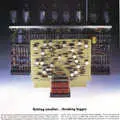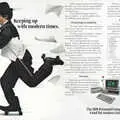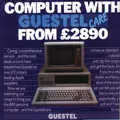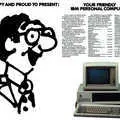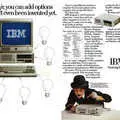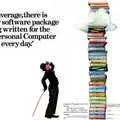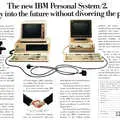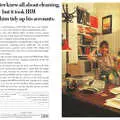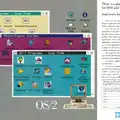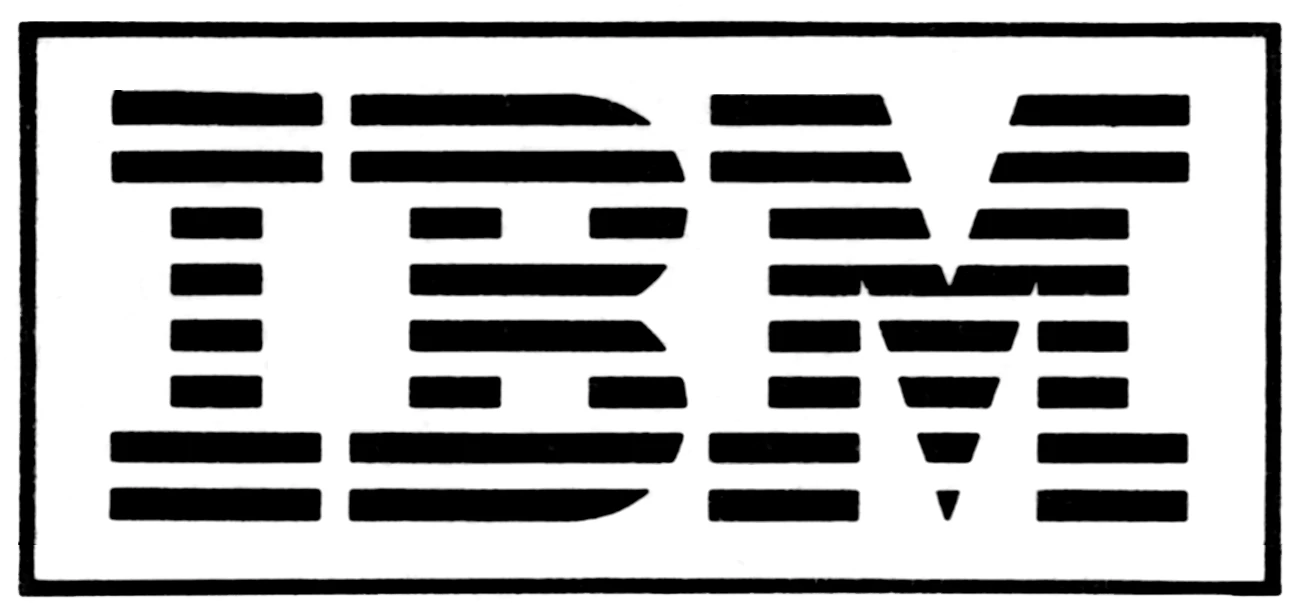
IBM Advert - July 1982
From Personal Computer World
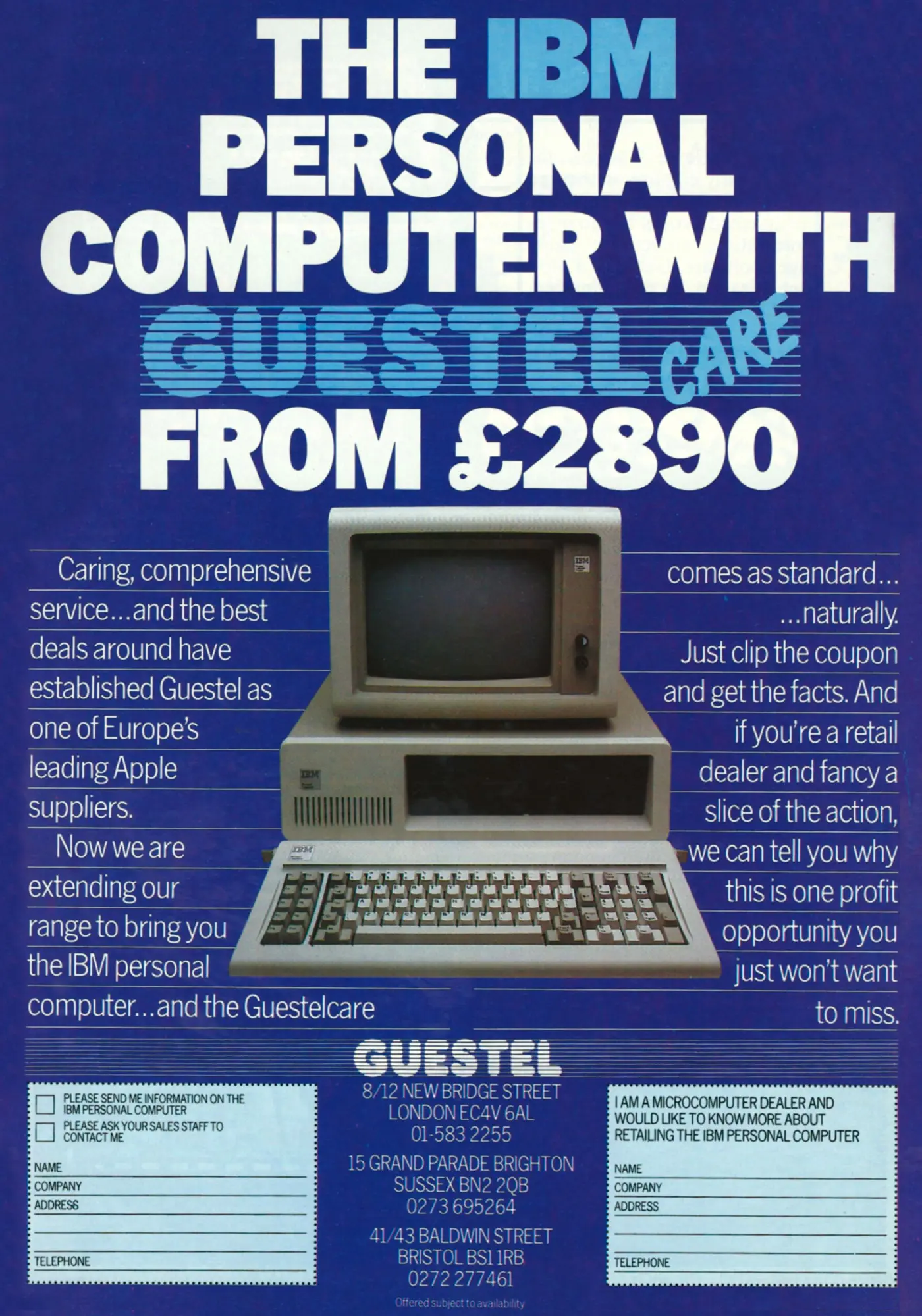
The IBM Personal Computer, from £2,890
This is a third-party advert for the original Intel 8088-based 5150 IBM PC, the computer which defined the "PC" for a generation or two.
In Europe, the Sirius/Victor 9000, which used the same 8088 CPU, was considered a much better machine and for a while outsold the IBM, until IBM finally got round to distributing the 5150 directly and the weight of PC standardisation crushed everything else.
This didn't happen straight away though, as despite being launched in the US in 1981, by February 1982 there was still no sign of it in the UK, largely because IBM was running an order backlog of some 40,000 units and so there was no spare production to service any non-domestic markets.
This situation remained until Mick Punter of Microcomputerland, a subsidiary of Zeus-Hermes[1], unexpectedly started importing machines direct from (the non-related) Computerland in San Francisco, an authorised IBM dealer - an activity which apparently aroused the interest of the UK's Fraud Squad and which led to the firing of a number of salesmen[2].
Importing the 5150 required use of a voltage conversion adapter to go from US 110V/60Hz to UK 240V/50Hz, but despite the hassle about twenty 64K machines at £2,875 (£13,700) each were sold at the UK computer show Compec[3].
These "grey imports" were subsequently advertised by Microcomputerland in February 1982's Personal Computer World[4] at £2,800 + VAT, or around £15,400 in 2025.
Within a month or so, Punter had even upgraded the machines, with a 20MB disk drive and up to 1MB memory. At this time, Punter still had no idea when IBM might actually start shipping a proper UK version, but it didn't seem to upset IBM that much, as according to Guy Keyney in March 1982's Personal Computer World it was almost like free market research for Big Blue.
It was thought that Microcomputerland eventually sold hundreds or even thousands of IBM PCs in this way before it quietly went in to voluntary liquidation at the beginning of 1983, bankrupted whilst still waiting for the official shipping of the thing[5].
At least its liquidation was quiet until a notice of a creditors meeting arrived on the desk of Personal Computer World journalist Guy Kewney.
This revealed that as well as there being an outstanding civil action against former directors to the tune of £10,000, others had clearly legged it, as "extensive enquiries have failed to reveal the whereabouts of a debtor who owes £3,789"[6].
As soon as the IBM PC had launched, speculation turned to the effect that it might have on the existing incumbents like Commodore and Apple, which had built the very market that IBM was now threatening.
To some extent, the early market - according to Martin Banks of Personal Computer World - was developed by computer freaks, and their first customers were also computer freaks.
By 1981 though, the home computer market was exploding and several companies, especially Commodore, more-or-less abandoned the business market to target home computers.
By the time IBM moved in, the business market had grown significantly, but more importantly it was moving away from its traditional reliance on mainframes and minis.
When the "jolly blue Leviathan IBM" chose to enter this burgeoning market, Banks pointed out that:
"It is perhaps on the performance of IBM's personal computer, more than any other company's, that the fate of the existing microcomputer manufacturers now hangs. If IBM gets it right as it might at first appear to have done, then some of these companies could be in for a rough ride. Some indeed may not make it. IBM becomes one of the first companies to produce a single system that gets close to the utopian 'all purpose' machine. It can be produced cheaply enough to be directly price-competitive at the low end and it is powerful enough to be performance-competitive at the high end. Add communications facilities such as the optional IBM 3270 emulator and the company is seen to cover more bases in one go than any company before it".
Banks speculated that Apple, Tandy and Commodore - currently at the top of the micro pile - might be the ones to suffer.
Apple was narrowly focussed, but had the advantage that it was the darling of Wall Street, whilst Tandy was very widely based with not just its micros but its whole Radio Shack empire.
However Commodore - although it had just launched the then-unknown VIC-20 - was still mostly relying on the PET, which was somewhat "long in the tooth", so it:
"could be a favourite for something [to happen], which could range from a new system, via a takeover, to demise"[7].
The IBM 5150 didn't officially launch in the UK until January 1983 - over sixteen months since its August 1981 launch in the States.
One reason given for this was the company's lack of expertise in managing the complex dealer and distributor network in Europe where, unlike the far-more-homogenous US - where IBM had its own retail network and the nationally-known Sears Roebuck to sell through - it didn't have any one national name available to it.
Nevertheless, IBM was clearly attempting to build some sort of bridge-head in Europe and announced in early 1983 that it would be setting up a factory at Greenock in Scotland in order to manufacture the machine.
Kenneth Baker, Minister in charge of Information Technology at the time, said:
"I warmly welcome the decision by IBM to manufacture their personal computer for the whole of Europe at Greenock. It is further evidence of the company's commitment to this country"[8].
Once IBM did start selling in Europe, the requirements for potential dealers were particularly stringent: they had to sign an agreement which dictated the sort of behaviour that IBM expected of them; they had to agree not to hype the capabilities of the IBM machine nor to disparage other companies' products; they had to agree to do warranty fixes no matter where the faulty machine was purchased and they must send two sales and two engineering staff on IBM training courses.
At the same time, IBM had the right to undertake spot checks on dealer premises and even to interview staff to check that standards were being maintained[9].
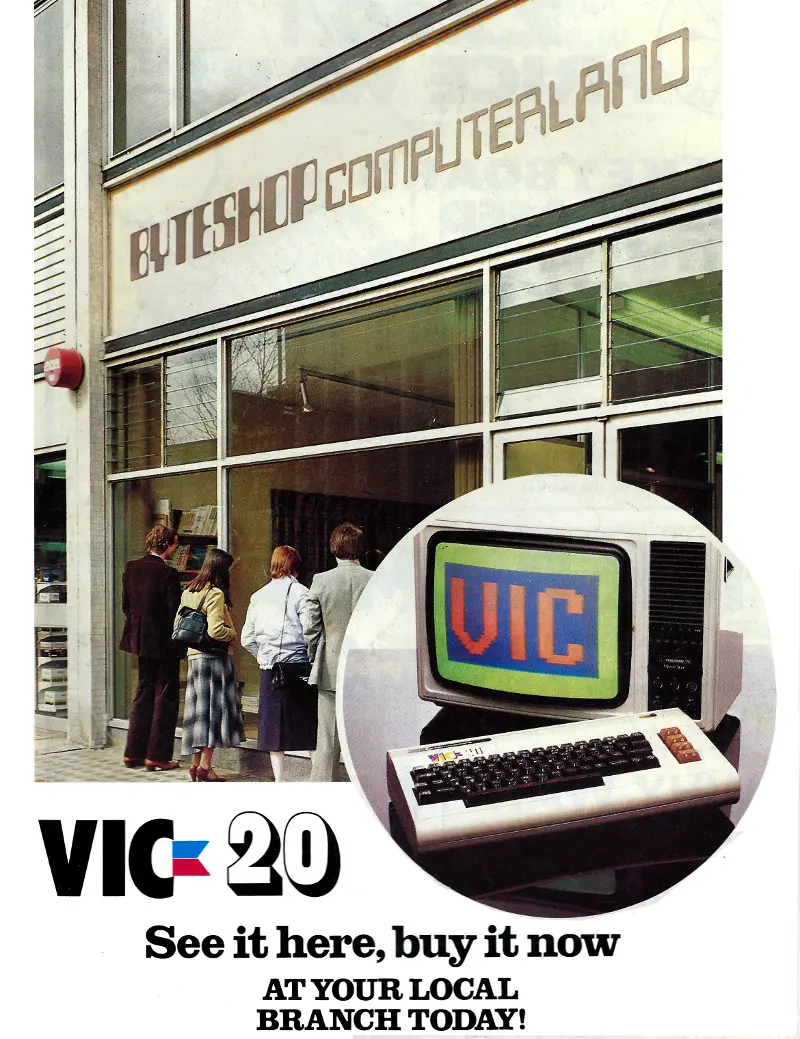
A Byteshop/Computerland outlet, © 6th May 1982, Popular Computing WeeklyThe cost for the 5150 shown in the advert of £2,890 would be about £13,800 in 2025 terms, although this does include some sort of dealer warranty.
It wasn't especially cheap, although its high cost may be at least partly explained by the sheer chip count that Clive Sinclair had observed in its construction, saying:
"If you take [the Spectrum] apart, and theirs, you will see that theirs is very old technology. On the outside the IBM PC may look elegant but inside it is board after board after board of chips. The cost of making it must be astronomical"[10].
IBM's baby was also considered underpowered even when it came out. It ran an Intel 8088 which was a 16-bit CPU but only had an 8-bit data bus, which slowed things down.
On the upside it had a 20-bit internal memory architecture, which meant it could address up to 1MB of memory, even though the entry-level machine provided a measly 64K.
The follow-up to the 5150 - the IBM XT (or "Extended") was released around June 1983, with up to 640K of RAM and a 5¼" Winchester drive, together with PC-DOS version 2, from Microsoft.
This wasn't cheap either, rocking in at an expected £4,858 - that's around £21,400 in 2025 prices.
By 1984 - only a year later - the press seemed to be fed up with the whole IBM PC and the rise of the clones thing, with Personal Computer News writing that:
"the most depressing feature of the [1984 Hannover Computer Fair] was the proliferation of so-called IBM PC compatibles. No matter where you turned a manufacturer felt obliged to turn out a micro to nibble at the heels of IBM"[11].
Date created: 01 July 2012
Last updated: 04 April 2025
Hint: use left and right cursor keys to navigate between adverts.
Sources
Text and otherwise-uncredited photos © nosher.net 2025. Dollar/GBP conversions, where used, assume $1.50 to £1. "Now" prices are calculated dynamically using average RPI per year.
